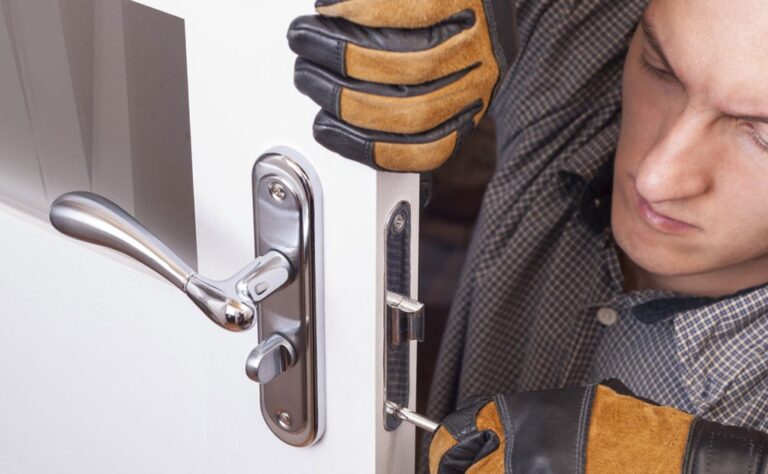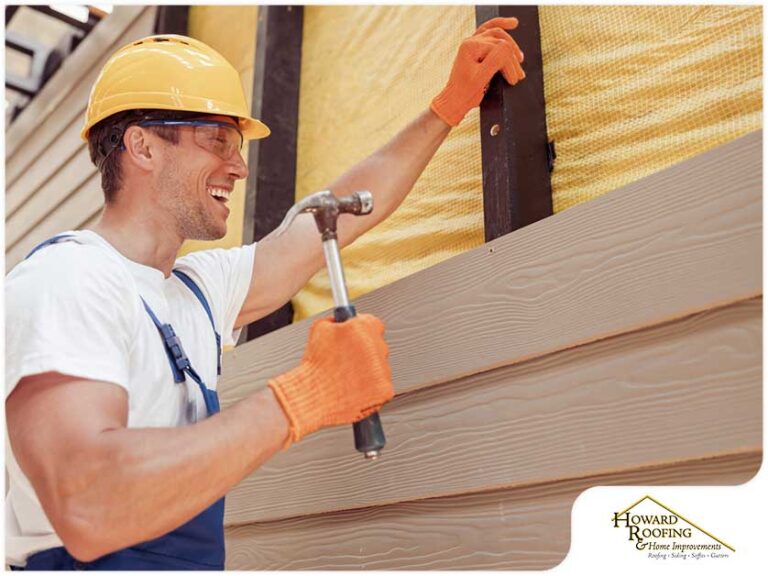7 Best Software Tools For Radon Mitigation Specialists
Radon mitigation specialists play a crucial role in ensuring homes and buildings are safe from harmful radon gas. With advancements in technology, various software tools have been developed to aid these specialists in their work. These tools can streamline tasks such as data entry, report generation, and calibration services.
But which software tools are the best for radon mitigation specialists? This article explores the top seven software tools that can help professionals in the field achieve more efficient and accurate results. By leveraging these tools, specialists can enhance their productivity and provide better service to their clients.
1) Airthings Corentium Home Radon Detector
The Airthings Corentium Home Radon Detector is a user-friendly device that helps monitor radon levels in your home. It provides both short-term and long-term readings, making it a versatile tool for continuous monitoring.
One of the key features is its ease of use. Simply insert AAA batteries and place it in a frequently used room. There’s no need for any complicated setup or recalibration, which saves time and effort.
The integrated LCD display shows real-time radon levels. This allows users to quickly see if there are any changes that might require immediate attention.
The device has a lifespan of up to 10 years. This long battery life ensures that the Airthings Corentium Home Radon Detector offers reliable, long-term radon monitoring.
Radon mitigation specialists appreciate this device for its accuracy and low maintenance. It’s often mentioned in industry reviews as a top choice for both homeowners and professionals.
Priced at around $149.99, it offers good value for a reliable radon detection system. It’s often compared with more expensive models but stands out due to its simplicity and effectiveness.
For anyone looking to keep their home safe from radon, the Airthings Corentium Home Radon Detector is a trustworthy option. It combines advanced radon-sensing technology without the need for constant maintenance.
2) Safety Siren Pro Series3 Radon Gas Detector
The Safety Siren Pro Series3 Radon Gas Detector is a useful tool for monitoring radon levels in homes. It offers both short-term and long-term readings, making it easy to track and assess radon concentrations over different periods.
This device displays radon levels on a numeric LED screen with a range from 0.1 to 999.9 pCi/L. Short-term readings provide the average radon levels over the past seven days. Long-term readings show averages since the detector was last powered up or reset.
It is designed to be plugged into a standard 120-volt household outlet, using the provided power cord. The detector should be placed face-up on a tabletop or any flat surface to ensure ventilation slots are not blocked.
To maintain accuracy, the Safety Siren Pro Series3 should be kept dust-free. This helps in providing reliable readings and extends the life of the device. Its compact size and clear LED display make it user-friendly.
For radon mitigation specialists, this device is valuable for continuous monitoring. By providing hourly updates on radon levels, it ensures timely detection and action. This feature helps in maintaining safe indoor air quality.
The Safety Siren Pro Series3 has been reviewed as effective and reliable. More details and purchasing options can be found on Safety Siren Pro3 – Radon Detect or Safety Siren Pro Series3 Radon Gas Detector – amazon.com.
This makes the Safety Siren Pro Series3 a trusted choice for specialists needing precise and consistent radon level readings.
3) EcoQube Air
EcoQube Air is a modern radon detector designed to fit seamlessly into any home. Its compact, unobtrusive design makes it easy to place in any room. The device is black and minimalist, ensuring it blends well with various home decors.
One significant feature of the EcoQube Air is its Wi-Fi connectivity. This allows users to monitor radon levels through a smart app. The app provides real-time updates and historical data, which helps homeowners track radon exposure over time.
The EcoQube Air boasts high accuracy. Utilizing patented detection technology, it delivers a counting sensitivity of 30 counts per hour per pCi/L. This makes it 15 times more sensitive than the minimum standard set by ANSI/AARST. Such precision ensures reliable radon detection.
Another advantage of this device is its user-friendliness. It’s designed with an easy setup process. Users can get started quickly and begin monitoring radon levels without hassle. Annual calibration is handled by Ecosense, further simplifying maintenance.
The EcoQube Air is not only suitable for residential use but can also support professional radon testing needs. It offers flexible deployment periods ranging from 48 to 96 hours, ensuring compliance with various testing requirements.
The combination of technology, ease of use, and accurate readings makes the EcoQube Air a valuable tool for radon mitigation specialists and homeowners alike. For more information, you can explore the EcoQube online.
4) RadonEye RD200
The RadonEye RD200 is a radon monitor that stands out for its high sensitivity and accuracy. This device captures radon fluctuations in real-time, providing early and accurate detection of radon levels. Such precise measurement is essential for radon mitigation specialists who need reliable data.
The RadonEye RD200 offers a user-friendly mobile app that allows professionals to monitor radon trends easily. This feature ensures that specialists can access and interpret data quickly, making it easier to take timely actions.
One notable aspect of the RadonEye RD200 is its patented advanced sensor technology. This technology enhances the device’s performance, giving it an edge over many other monitors in the market. Consequently, specialists can trust the RD200 for accurate results.
Another advantage of this monitor is its affordability. Priced at approximately $174, the RadonEye RD200 offers exceptional value for its capabilities. This makes it a practical choice for both new and seasoned professionals.
The RadonEye RD200 also boasts a modern design. It’s compact and portable, making it suitable for various testing environments. Specialists can easily carry it to different sites without hassle.
Additionally, the real-time data feature of the RD200 is complemented by the ability to view trends on the RadonEye App. This app allows for a smart view of data, helping specialists track changes over time and make informed decisions.
Finally, the monitor’s ease of use and quick setup are significant benefits. Professionals can set up and start using the RD200 with minimal effort, focusing more on their core work rather than on device configuration.
5) Wave Plus by Airthings
Wave Plus by Airthings is a comprehensive air quality monitor. It measures six aspects of indoor air quality including radon, carbon dioxide (CO2), and more.
This device offers real-time radon detection and is ideal for homes with potential radon issues. It comes with a free smart app that can be downloaded to your phone.
The Wave Plus connects via Bluetooth, allowing easy access to air quality data. The information collected is also available on a web dashboard, providing a detailed look at home air quality.
High levels of CO2 can affect concentration and decision-making. Wave Plus helps users stay in control of their air quality by continuously monitoring and providing updates.
This device is especially useful for radon mitigation specialists who need accurate and continuous monitoring. It helps identify problems and provides guidance on acceptable levels and steps to reduce issues.
With its app-enabled features and detailed metrics, Wave Plus makes managing indoor air quality straightforward and effective. For more information, you can visit Airthings Wave Plus.
Wave Plus includes additional sensors for TVOCs (Total Volatile Organic Compounds) and air pressure. This offers more comprehensive data on indoor air conditions.
This indoor air monitor is user-friendly and provides valuable insights for ensuring a healthy living environment. Radon mitigation specialists will find it particularly beneficial for its detailed and continuous measurements.
6) RadonAway GP501 Radon Mitigation Fan
The RadonAway GP501 Radon Mitigation Fan is popular among professionals in the radon mitigation industry. It is designed to work effectively in sub-slab radon mitigation environments.
This fan is known for its durability. It can perform well in various climates, which means users don’t need to worry much about temperature and weather effects.
It is also built with high-quality materials. This ensures a long-lasting performance, making it a reliable choice for many specialists.
The GP501 model is part of RadonAway’s lineup. This model, GP501c, includes updates and improvements over previous versions. These enhancements aim to make it even better suited for radon mitigation tasks.
For those dealing with harsher climates, the GP501c is a strong contender. Its design allows it to function without additional protections against extreme conditions.
Professionals have noted its ease of installation. This can save time and effort during setup, allowing specialists to get the job done efficiently.
To read more about this fan, visit RadonAway GP501c Radon Fan.
Overall, the RadonAway GP501 is a solid choice for anyone looking for a reliable and durable radon mitigation fan.
7) Fantech HP2133 Radon Fan
The Fantech HP2133 Radon Fan is a reliable choice for radon mitigation specialists. Designed to effectively reduce radon levels in residential homes, this fan excels in both performance and durability.
This fan features a powerful motor that can handle higher airflows without compromising efficiency. It is known for its robust construction, ensuring long-lasting operation even under demanding conditions.
Installation of the Fantech HP2133 is straightforward, making it a preferred option for professionals. The sealed housing prevents radon leakage, adding to the safety of the mitigation system.
In addition to its functionality, this fan operates quietly. This characteristic is particularly important for residential installations where noise can be a concern.
Backed by over 30 years of experience, Fantech provides dependable products that are trusted in the industry. The Fantech HP2133 Radon Fan is no exception, making it a top choice for those serious about radon mitigation.
Understanding Radon Mitigation
Radon mitigation is crucial for reducing the health risks associated with radon exposure. This section covers what radon is and why mitigating it is essential for maintaining safe air quality.
What is Radon?
Radon is a radioactive gas found naturally in the environment. It forms from the decay of uranium in soil, rock, and water. Radon is invisible and odorless, making it hard to detect without specialized equipment. When radon is released from the ground into the air, it can enter homes through cracks in floors, walls, and foundations.
Radon is measured in picocuries per liter (pCi/L) and is considered dangerous when levels exceed 4 pCi/L. High radon levels pose severe health risks, particularly lung cancer. It is the second leading cause of lung cancer in the United States, causing around 21,000 deaths each year. Proper testing is crucial to determine radon levels and decide if mitigation is needed.
Importance of Radon Mitigation
Mitigating radon is vital to protect occupants from its harmful effects. Radon can accumulate in homes, schools, and workplaces, leading to prolonged exposure and increased cancer risk. The Environmental Protection Agency (EPA) recommends action when radon levels exceed 4 pCi/L. Even levels between 2 and 4 pCi/L require consideration for mitigation.
Radon mitigation systems can range from simple solutions like sealing cracks to more complex ones like Active Soil Depressurization. These systems help lower radon levels by venting the gas outdoors. Hiring a professional for installation and regular checks ensures these systems function effectively, keeping indoor air safe.
In summary, understanding radon and the importance of its mitigation can significantly reduce health risks and ensure safer living environments.
Features to Look for in Software Tools
When choosing software tools for radon mitigation, it’s important to consider ease of use, effective data management, and compatibility with other systems. These features ensure that professionals can work efficiently and accurately.
User-Friendly Interface
A good radon mitigation software should have a user-friendly interface. This means clear menus, intuitive navigation, and accessible functions. It should be easy for both new and experienced users to understand and operate without extensive training.
Visual cues like icons and tooltips can help guide users. A clean, organized layout reduces confusion and increases productivity. Customizable dashboards can provide quick access to frequently used tools and information.
Data Management and Reporting
Effective data management is crucial in radon mitigation. The software should allow for easy entry, storage, and retrieval of test data. Professionals need to track and compare results over time, so data integrity is essential.
Reporting features should include customizable templates for generating state-specific and consumer reports. Automatic notifications for expiring devices, duplicates, spikes, and cross-check entries help maintain quality assurance, as mentioned by RadonEasy.
Integration Capabilities
The software should have strong integration capabilities. It needs to sync with devices like radon detectors and monitors, enabling automatic data collection. Integration with other software systems such as accounting tools or customer relationship management (CRM) systems is also beneficial.
This compatibility can streamline operations, ensuring that all parts of the business are connected and data flows smoothly between systems. For instance, products like SARAD Radon Vision offer advanced features that enhance overall efficiency.
Best Practices for Using Software Tools
To ensure optimal performance and secure handling of data, radon mitigation specialists should focus on regular training and updates, as well as maintaining data security and privacy.
Regular Training and Updates
To keep up with advancements in technology, it is essential for radon specialists to engage in regular training. This involves staying updated with the latest software versions, features, and best practices. Training sessions can help users gain proficiency in new functionalities and troubleshoot common issues effectively.
Using online tutorials, webinars, and workshops can enhance the skills of the team. Specialists should also consider scheduling regular review meetings to discuss the software’s performance and any challenges faced. This proactive approach ensures the software is used to its fullest potential.
Data Security and Privacy
Protecting client data is paramount. Radon mitigation software often involves sensitive information, and it is crucial to apply robust security measures. Implementing encryption for data storage and transfer can prevent unauthorized access. Specialists should use strong, unique passwords and update them regularly.
It’s important to follow legal regulations regarding data protection. Regular audits and compliance checks can also help identify potential vulnerabilities. Using secure, cloud-based solutions can offer additional layers of protection through automated updates and backups.
Frequently Asked Questions
This section addresses major concerns when choosing software tools for radon mitigation. It covers top software solutions, free tools, NRPP approved device integration, important features, the most effective software, and the comparison of modern tools to traditional methods.
What are the top software solutions for radon mitigation professionals in 2024?
Professionals often favor tools like RadonEasy, which automates data entry, generates reports, and ensures quality control. Another popular choice is Protect Environmental, known for its comprehensive FAQ resources and advanced radon management features.
Which software tools for radon mitigation are available for free?
Free tools are limited but some software offers trial versions or basic features without cost. Checking specific provider sites for free versions or trial periods is recommended. Always verify the tool’s efficacy and compliance with industry standards.
How do NRPP approved devices integrate with radon mitigation software?
NRPP approved devices often come with compatibility options for leading radon software solutions. This allows for seamless data transfer and analysis, improving the overall efficiency and accuracy of radon mitigation efforts. These integrations help in maintaining high standards for safety and reliability.
What features should be considered in selecting software for radon mitigation?
Key features include automated data entry, real-time monitoring, comprehensive reporting capabilities, and compatibility with various testing devices. Additionally, user-friendliness and customer support are important to ensure smooth operation and quick resolution of any issues.
What is the most effective software for managing radon test results and mitigation processes?
RadonEasy is highly rated for managing test results and mitigation processes. Its automation of test data entry, state-specific reports, and quality assurance notifications make it a standout choice.
How do modern radon detection tools compare to traditional testing methods?
Modern tools like Airthings Corentium Home Radon Detector and RadonEye RD200 use advanced technology for faster and more accurate readings. They provide real-time data and connectivity features, unlike traditional methods which often required longer wait times and manual data collection.






